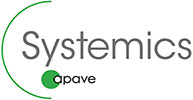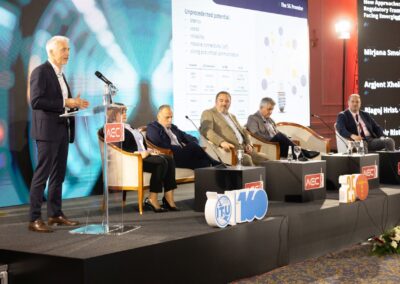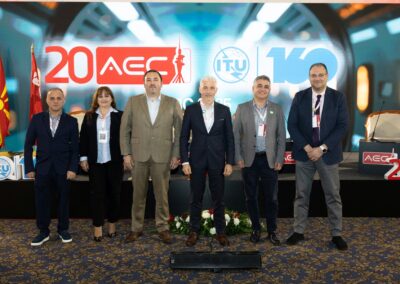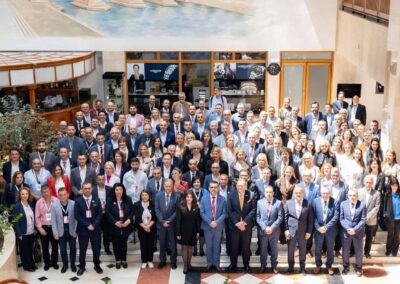
Last week, Systemics-PAB (Apave Group) had the honour of participating in the International Regulatory Conference (IRC2025) in Skopje (North Macedonia), which celebrated the 20th anniversary of AEC – the telco regulator of North Macedonia and the 160th anniversary of ITU. Congratulations to these two great institutions.
The IRC2025 Conference connected a diverse group of stakeholders, including policymakers, regulators, industry leaders, and experts from around the world. This realised an unique platform for discussing emerging regulatory frameworks, customer care practices, confidence and security in the use of ICTs, universal connectivity, spectrum management, and regional radiofrequency coordination for digital audio broadcasting.
One of the central themes of the conference was the exploration of new regulatory approaches to ensure universal connectivity and digital inclusion. The conference delved into the importance of spectrum management and the coordination of regional radio frequencies .
Mr. Mikołaj Skipietrow, Management Board Advisor of Systemics-PAB, presented our vision of the critical necessity to verify commitments and ensure the quality of 5G networks. The key message? Peter Drucker’s timeless wisdom: ‘You can’t improve what you don’t measure.‘ This is particularly important for 5G, given that the quality of 5G NSA relies heavily on the underlying LTE network. Therefore regular, proactive measurements are essential to drive robust improvements to the mobile network and ensure an excellent user experience.
Additionally, the IRC2025 discussions emphasized that the complexity of 5G extends beyond network quality and refers also to spectrum management (for both MNOs and emerging 5G private networks), legal frameworks, cybersecurity and the transformative potential of AI.
Systemics-PAB is dedicated to empowering regulators and MNOs by leveraging our extensive experience to help them verify 5G commitments and deliver exceptional mobile service quality.
![]() 5G Reality Check Verifying Commitments & Assuring Quality.pdf (2,5 MB)
5G Reality Check Verifying Commitments & Assuring Quality.pdf (2,5 MB)




